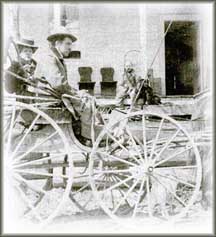| Welcome
To Three decades before "the discovery" of gold in what is now British Columbia, twenty-five Hudson's Bay Company men journeyed from their base on the Colombia River to establish a fort on the Fraser River. They arrived in 1827 to the cautious welcome of the Stó:lo people who had lived in the area for over 9000 years. Fort Langley quickly became a prosperous fur-trading fort made up of a heterogeneous group of company men and their Stó:lo wives. While the gold rush of 1858 brought a moment of prosperity to Fort Langley, it was also instrumental to the Fort's decline. During the early months of 1858 Fort Langley was thriving as the main supply point for prospectors to the Fraser River. But within only a matter of months, paddle wheelers were bypassing the Fort and steaming upriver as far as Hope and Yale. The gold rush brought many Americans to the territory and James Douglas, the Governor of Vancouver Island and manager of the Hudson's Bay Company's Pacific operations, feared an American takeover. On November 19, 1858 the British Government declared the territory a British Colony. The days of the Hudson Bay Company monopoly were thereafter over. By 1864 Fort Langley's palisade was dismantled. Today, costumed interpreters will take you back in time to life at the Fort during the 1850s. Next-door is the fabulous British Columbia Farm Machinery and Agricultural Museum -- a large warehouse-style museum that’s filled with steam tractors, stump pullers, and even a Tiger Moth airplane When traveling east towards Hope, consider taking the scenic highway 7, stopping in Mission for a visit at the Xá:ytem Longhouse Interpretive Center, a great place to learn about the history and culture of the Stó:lo. Just 30 minutes east of Mission, near the Harrison River, is the Kilby Store and Farm, a 1920s BC Heritage Attraction that brings you country life as it was during the 1920s and 1930s.
|
